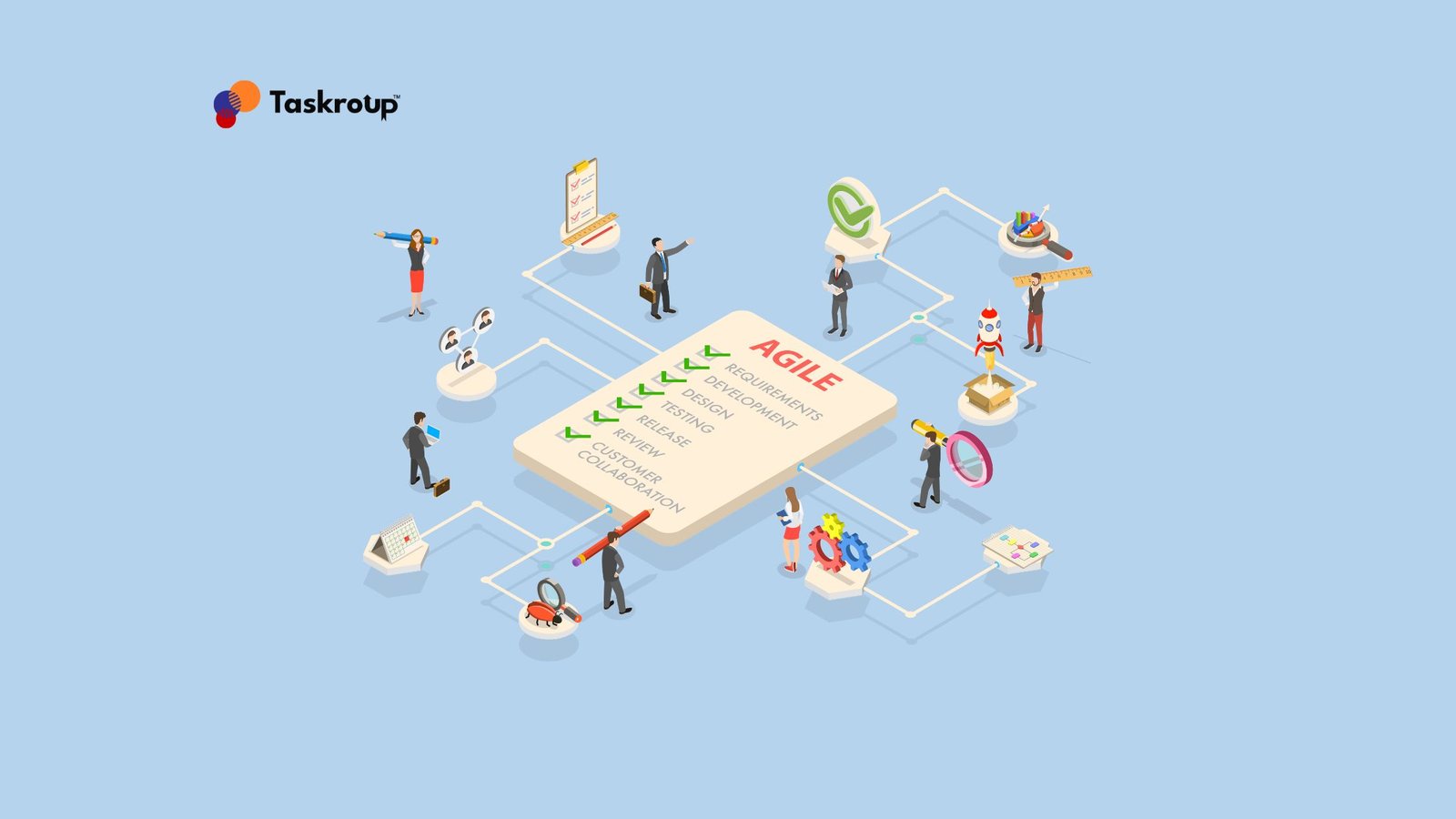Introduction to Agile Project Management
In today’s fast-paced business world, traditional project management approaches often fall short in delivering the desired results. That’s where Agile Project Management comes into play. Agile Project Management is a flexible and collaborative approach that focuses on delivering value to customers through iterative and incremental development. It embraces change, fosters effective communication, and empowers teams to adapt to evolving requirements.
At its core, Agile Project Management emphasizes the importance of individuals and interactions, working solutions, customer collaboration, and responding to change. It values customer satisfaction, early and continuous delivery, and encourages cross-functional teams to work together towards a common goal. By leveraging Agile Project Management, businesses can achieve greater project success rates, improved team productivity, and ultimately, transform the way they operate.
Key Principles of Agile Project Management
Agile Project Management is built on a set of key principles that guide its implementation. These principles are the foundation for creating a flexible and adaptive project management environment. Let’s explore some of the key principles of Agile Project Management:
- Customer Collaboration over Contract Negotiation: Agile Project Management emphasizes the importance of involving customers throughout the project lifecycle. By collaborating closely with customers, project teams can gain valuable insights, refine requirements, and ensure that the final product meets customer expectations.
- Embracing Change: Unlike traditional project management approaches, Agile Project Management embraces change as a natural part of the development process. It recognizes that requirements evolve and welcomes changes that add value to the project. This flexibility allows businesses to adapt quickly to market demands and deliver a product that meets the current needs of customers.
- Iterative and Incremental Development: Agile Project Management promotes iterative and incremental development. Instead of attempting to deliver the entire project at once, Agile teams break the project into smaller, manageable increments called sprints. Each sprint produces a working product increment that can be reviewed and adjusted based on customer feedback.
Benefits of Agile Project Management
Agile Project Management offers numerous benefits that can transform businesses in various ways. Let’s take a closer look at some of these benefits:
- Improved Project Visibility and Control: Agile Project Management provides enhanced visibility into project progress and empowers teams to take control of their work. Through daily stand-up meetings and project dashboards, teams can track their progress, identify issues, and make necessary adjustments to ensure project success.
- Increased Customer Satisfaction: By involving customers throughout the project lifecycle, Agile Project Management ensures that the final product meets customer expectations. Regular feedback loops allow for continuous improvement and enable businesses to deliver a product that truly satisfies the needs of their customers.
- Enhanced Team Collaboration and Productivity: Agile Project Management fosters collaboration and cross-functional teamwork. By breaking down silos and encouraging open communication, it creates an environment where team members can share knowledge, leverage each other’s expertise, and work towards a common goal. This collaborative approach enhances team productivity and promotes a sense of ownership and accountability.
Agile Project Management vs. Traditional Project Management
To fully understand the power of Agile Project Management, it is essential to compare it with traditional project management approaches. While both methodologies aim to deliver successful projects, they differ in several key aspects. Let’s explore the differences between Agile Project Management and Traditional Project Management:
- Approach to Planning: In Traditional Project Management, planning is done upfront and typically involves creating a detailed project plan that outlines all the tasks, dependencies, and timelines. In Agile Project Management, planning is done iteratively and focuses on short-term goals. Instead of a rigid plan, Agile teams work with a backlog of prioritized tasks, allowing for flexibility and adaptation.
- Handling Change: Traditional Project Management treats change as a risk and aims to minimize it. Changes to the project scope are often discouraged or require a formal change request process. In contrast, Agile Project Management embraces change and sees it as an opportunity for improvement. Changes are expected, and the Agile team adapts to them by adjusting priorities and incorporating them into the project.
- Customer Involvement: While customer involvement is important in both methodologies, Agile Project Management emphasizes continuous customer collaboration. Customers are actively involved throughout the project, providing feedback and validating the product incrementally. Traditional Project Management, on the other hand, may involve customers at the beginning and end of the project, with limited involvement during the development phase.
Agile Project Management Methodologies
Agile Project Management encompasses a variety of methodologies, each with its own set of practices and frameworks. These methodologies offer different approaches to implementing Agile principles and cater to different project needs. Let’s explore some popular Agile Project Management methodologies:
- Scrum: Scrum is one of the most widely used Agile methodologies. It follows a framework that divides the project into short iterations called sprints. Scrum teams work collaboratively to deliver a working product increment at the end of each sprint. Daily stand-up meetings, backlog refinement, and sprint reviews are key practices in Scrum.
- Kanban: Kanban is a visual Agile methodology that focuses on visualizing work and limiting work in progress. Kanban boards are used to track tasks and their progress. Kanban teams aim to achieve a smooth flow of work by pulling tasks from the backlog as capacity allows. Continuous improvement and cycle time reduction are central to Kanban.
- Lean: Lean is an Agile methodology that aims to eliminate waste and maximize value. It focuses on delivering value to customers quickly and efficiently. Lean teams strive to identify and eliminate non-value-added activities, reduce cycle time, and optimize processes. Continuous improvement and customer feedback are fundamental to Lean.
Agile Project Management in Different Industries
Agile Project Management is not limited to any specific industry. Its principles and methodologies can be applied across various sectors, including software development, marketing, manufacturing, and more. Let’s explore how Agile Project Management is transforming different industries:
- Software Development: Agile Project Management revolutionized the software development industry. By embracing Agile principles and methodologies, software development teams can deliver high-quality software faster, adapt to changing requirements, and ensure customer satisfaction.
- Marketing: Agile Project Management is gaining popularity in the marketing industry as well. Marketing teams are adopting Agile practices to manage campaigns, content creation, and digital marketing projects. Agile allows marketers to respond quickly to market trends, experiment with different strategies, and optimize campaigns based on customer feedback.
- Manufacturing: Agile Project Management is transforming the manufacturing industry by enabling companies to respond swiftly to changes in demand, optimize production processes, and reduce time to market. Agile methodologies help manufacturing teams streamline workflows, improve collaboration, and deliver products that meet customer expectations.
Implementing Agile Project Management in Your Business
Implementing Agile Project Management in your business requires careful planning and a commitment to change. Here are some key steps to successfully implement Agile Project Management:
- Educate and Train: Start by educating yourself and your team about Agile principles and methodologies. Provide training sessions and workshops to ensure everyone understands the Agile mindset and practices.
- Identify Pilot Projects: Choose a few pilot projects to start implementing Agile Project Management. These projects should be suitable for Agile practices and have clear objectives.
- Form Agile Teams: Create cross-functional Agile teams that are empowered to make decisions and take ownership of their work. Assign roles such as Scrum Master and Product Owner to ensure smooth project execution.
- Adapt Your Processes: Modify your existing processes and workflows to align with Agile principles. Implement Agile ceremonies such as daily stand-up meetings, sprint planning, and retrospectives.
- Invest in Collaboration Tools: Utilize Agile Project Management tools and software to facilitate collaboration, track progress, and manage project backlogs. Tools like Taskroup, Jira, Trello, and Asana can help streamline Agile processes.
Tools and Software for Agile Project Management
Agile Project Management relies on the right tools and software to ensure effective collaboration and project execution. Here are some popular tools used in Agile Project Management:
- Taskroup: Taskroup embodies Agile principles, facilitating seamless adaptation and collaboration. With features like iterative planning and continuous communication, it empowers teams for efficient project delivery in dynamic environments.
- Jira: Jira is a comprehensive project management tool that offers features specifically designed for Agile teams. It allows teams to plan and track work, manage sprints, and visualize project progress using customizable boards.
- Trello: Trello is a visual collaboration tool that enables teams to organize and prioritize tasks using boards, lists, and cards. It provides a flexible and intuitive interface that makes it easy to manage Agile projects.
- Asana: Asana is a versatile project management tool that supports Agile workflows. It allows teams to create tasks, assign responsibilities, and track progress using Kanban boards or list views. Asana also offers integrations with other popular Agile tools.
Conclusion: Embracing Agile Project Management for Business Success
Agile Project Management is a powerful approach that has the potential to transform businesses across industries. By embracing Agile principles and methodologies, businesses can achieve greater project success rates, improved team productivity, and ultimately, deliver value to their customers. Agile Project Management allows for flexibility, collaboration, and customer-centricity, enabling businesses to adapt to changing market demands and stay ahead of the competition.




